
Scientific name: Caloria indica
Size: From 0.6 to 2 inches
Color: Orange, blue and white
Distinguishing feature: Orange body, 2 longitudinal white bands on the head. Cattail spindles first storm, blue, then yellow and finally white. Rhinophores orange, yellow, then white and red ends.
Where did we see it: Raja Ampat
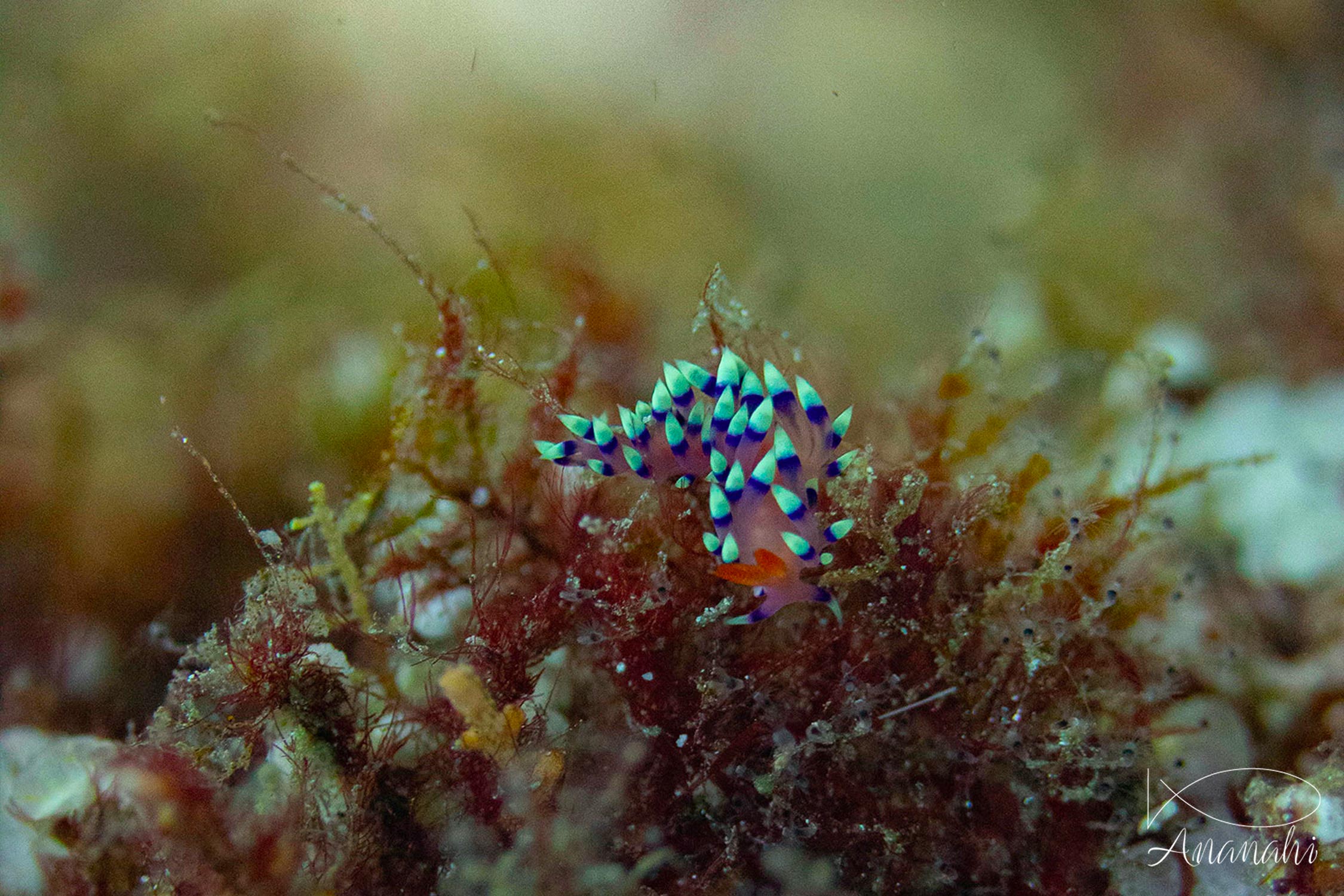
Scientific name: Caloria indica
Size: From 0.6 to 2 inches
Color: Orange, blue and white
Distinguishing feature: Orange body, 2 longitudinal white bands on the head. Cattail spindles first storm, blue, then yellow and finally white. Rhinophores orange, yellow, then white and red ends.
Where did we see it: Raja Ampat
This nudibranch is quite common, even if its small size and the hydrates on which it is does not facilitate its research!
It feeds on hydrates (a kind of underwater reed) and devours the polyps.
Like all the Eolidians, this nudibranch breathes through the skin through the ends of its cerates (thorns).
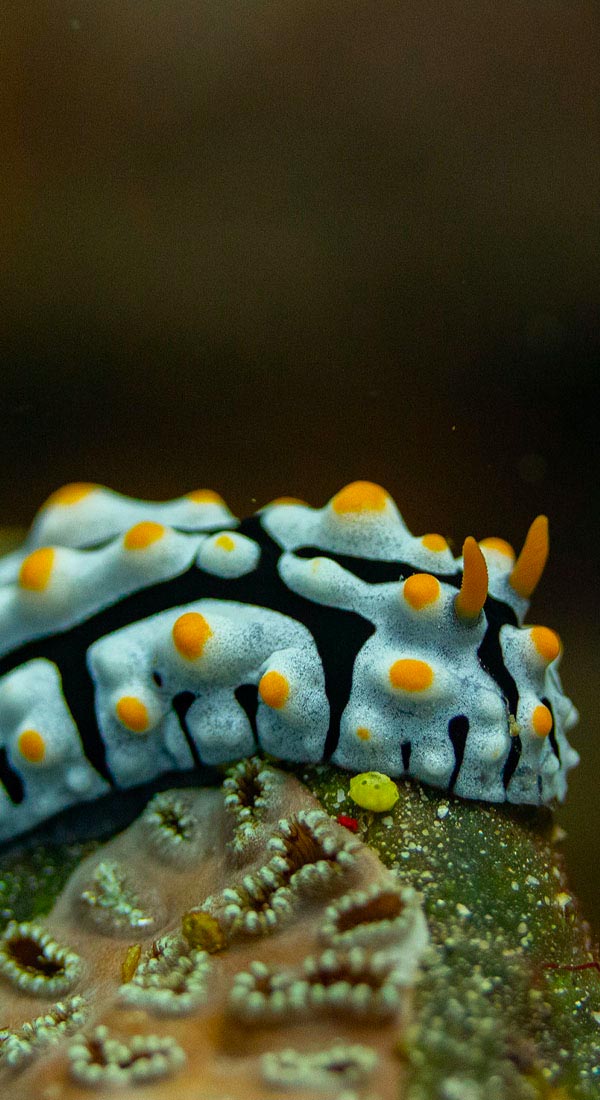
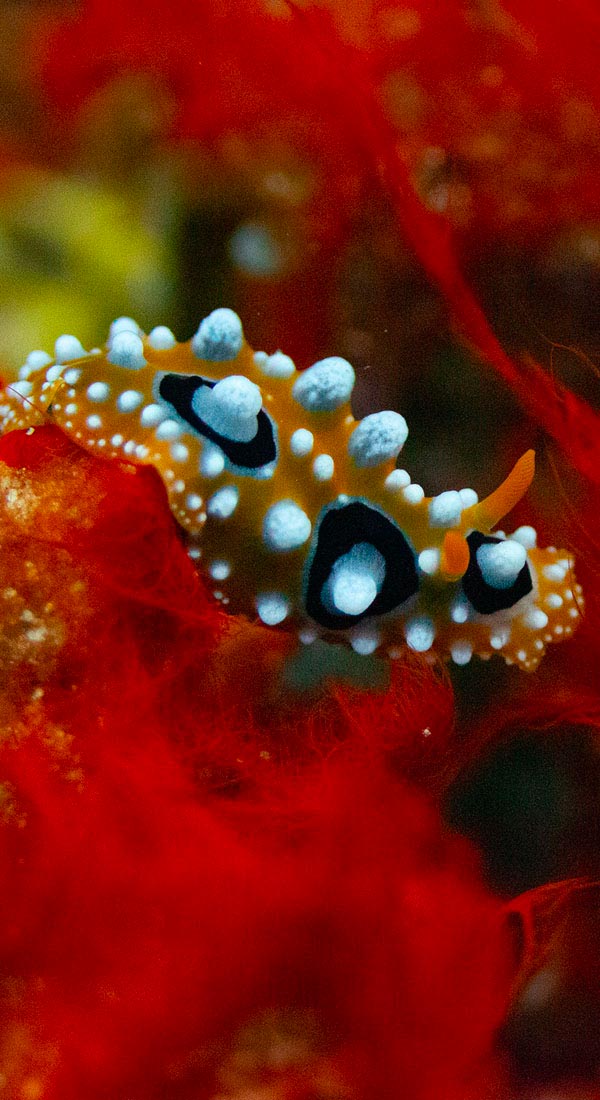
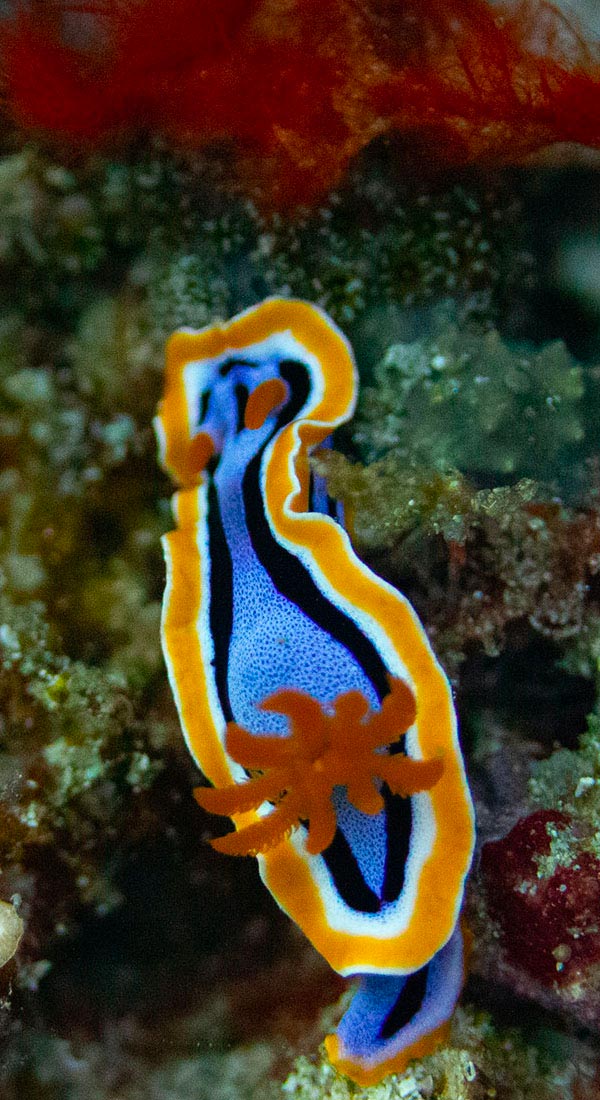

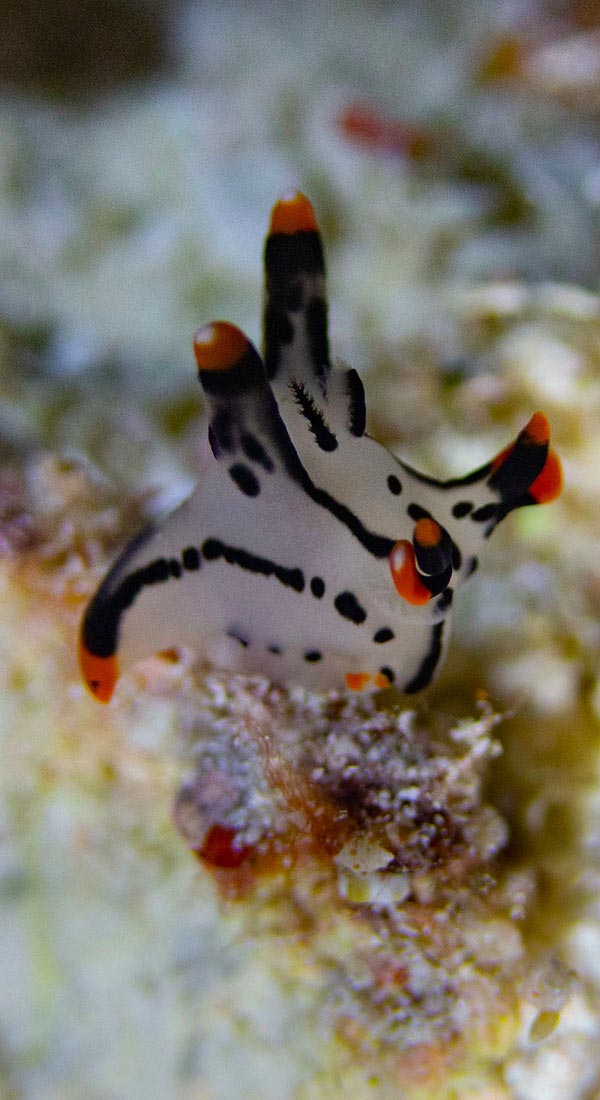

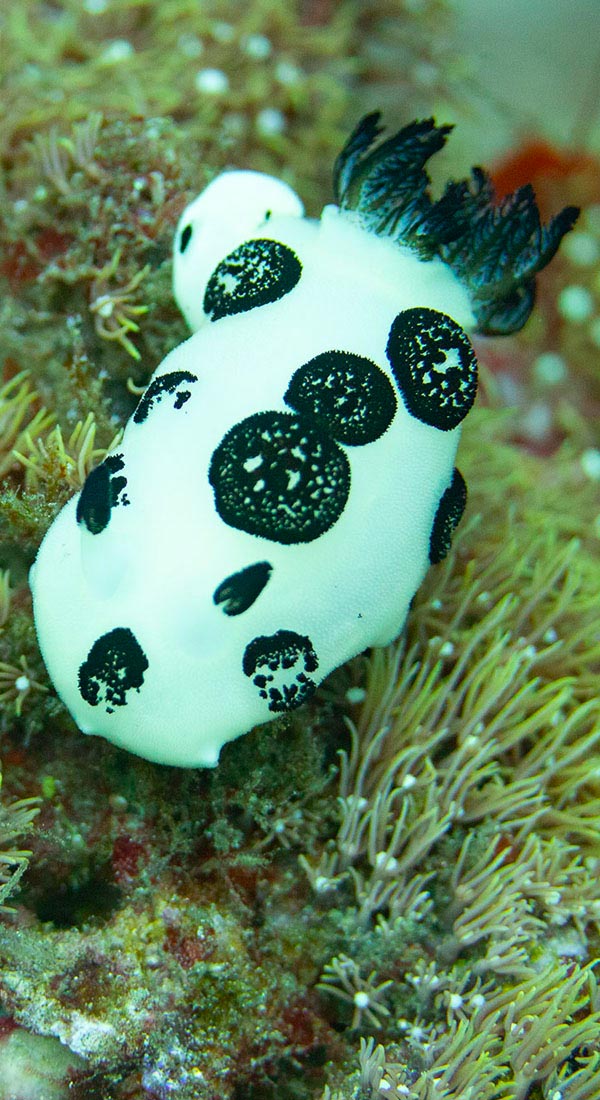

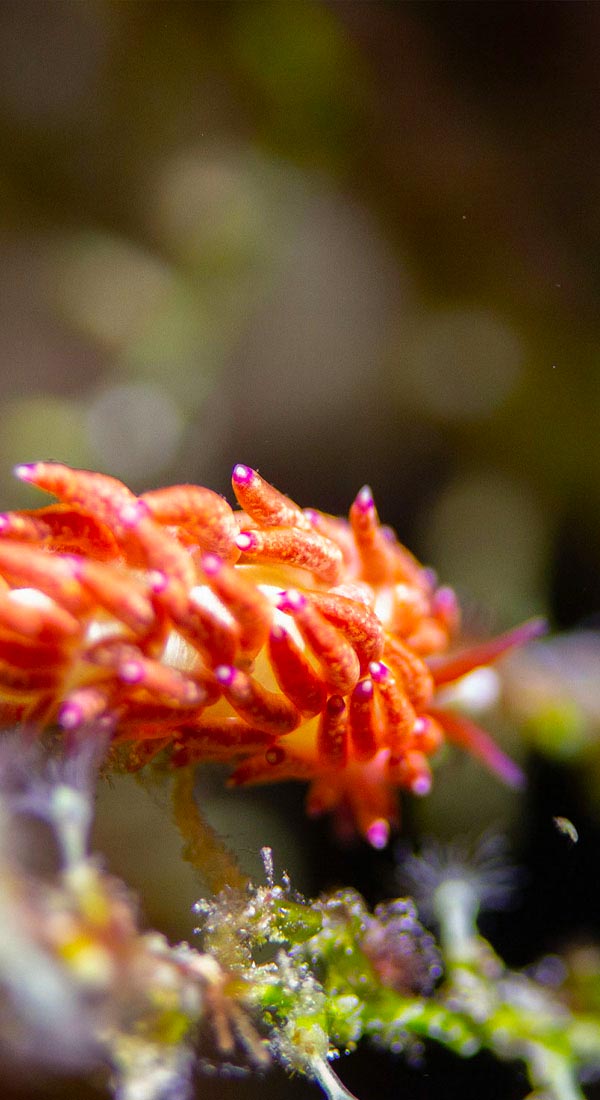


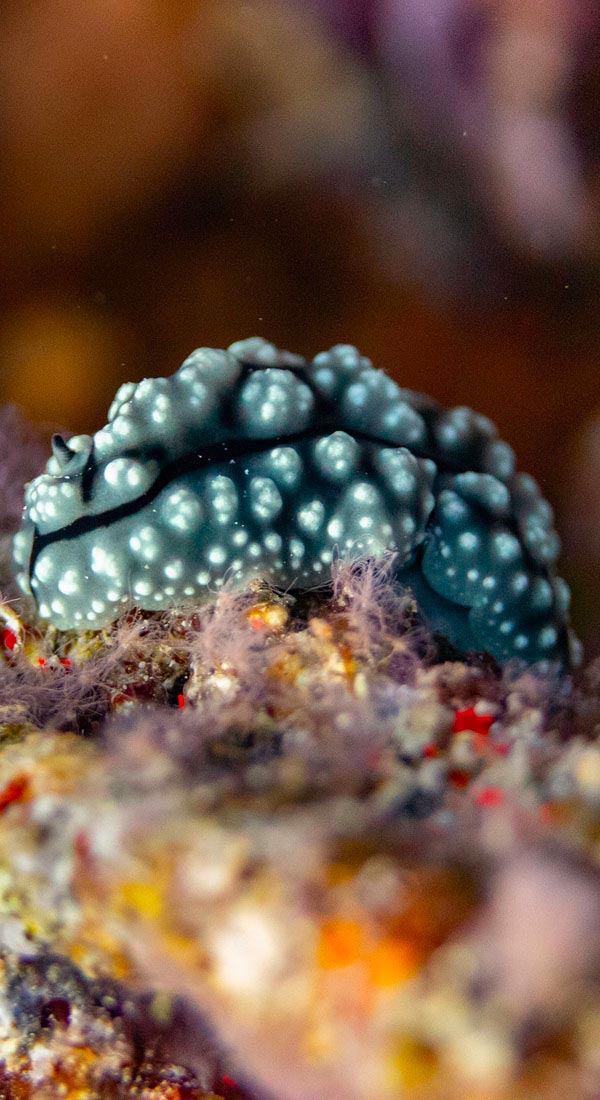
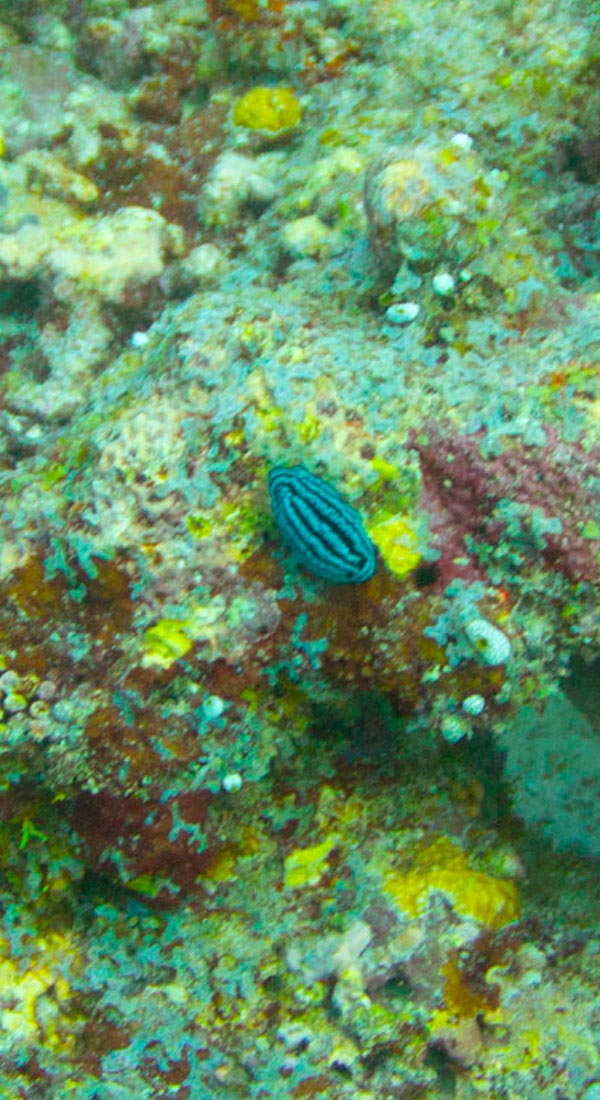


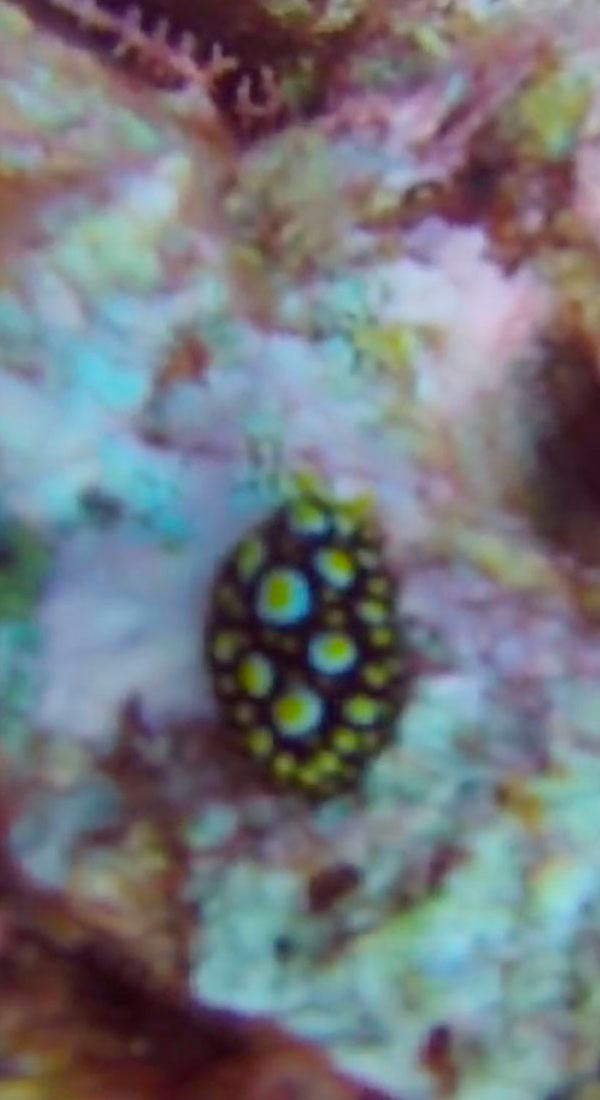
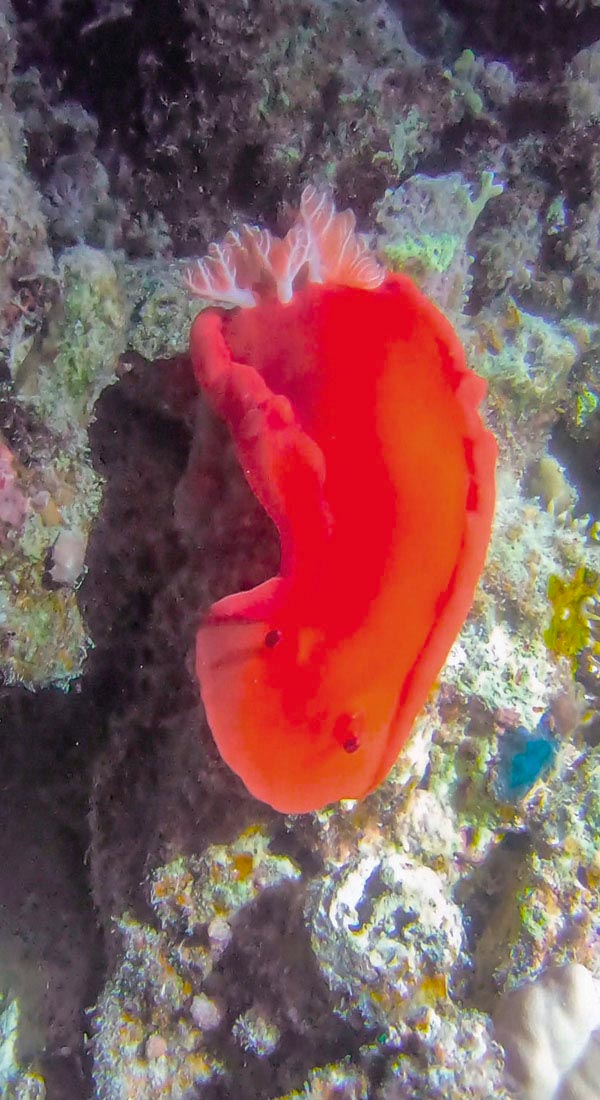
Some sharks can stay motionless on the sand (white tips reef sharks, nurse sharks, etc.).
These sharks don't have to swim to bring oxygen to their gills like other sharks (grey, hammerheads tc.)
Parrotfish create a protective envelope around them when they are sleeping.
So, don't put the light on them during night dive to don't to wake them up and break this envelope.
Mammals have a horizontal tail.
Fishes have a vertical fin.